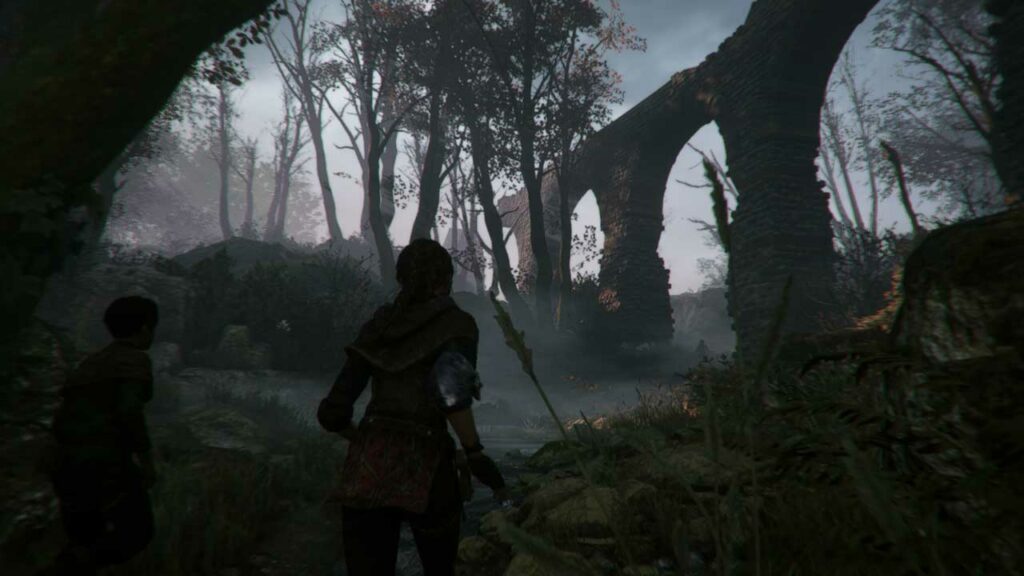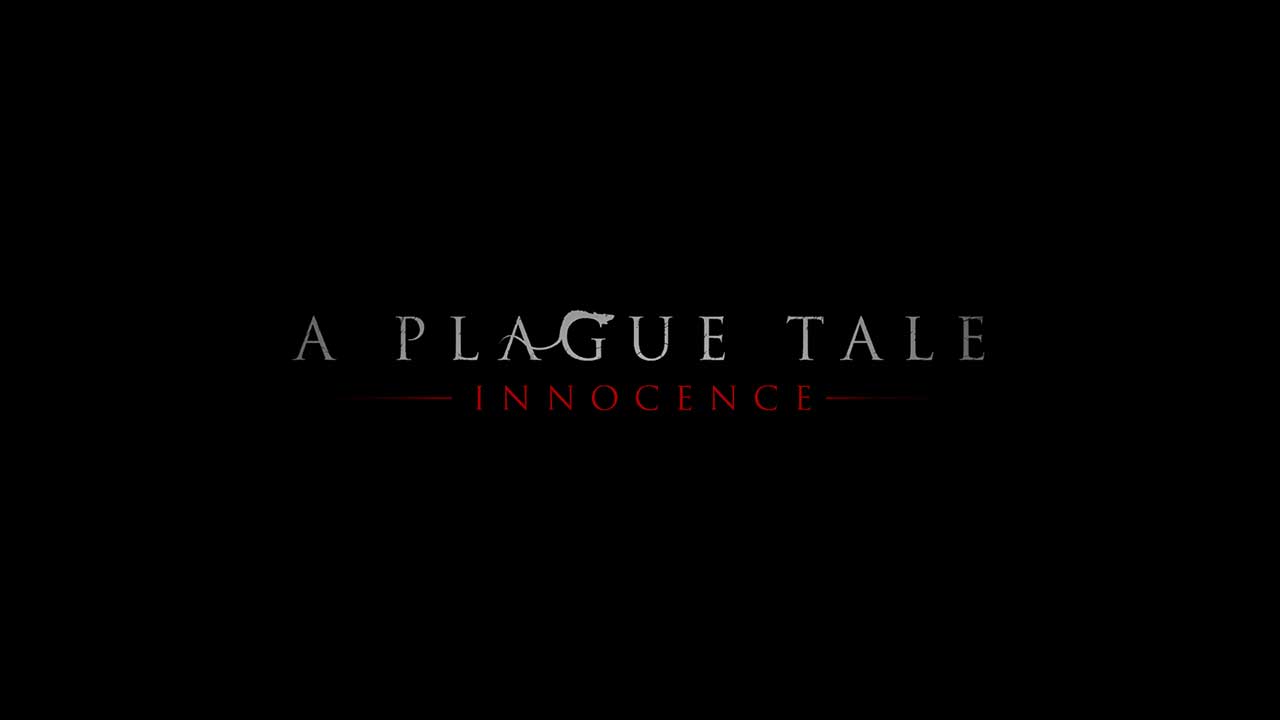When I first heard about A Plague Tale: Innocence a few years ago, it didn’t catch my attention. If a game gets the “survival horror” keyword, I’m usually skeptical because they almost never live up to the claim. But thanks to the years of solid buzz and an intriguing sequel coming soon, I just had to finally give it a try. And while it’s definitely not a “survival horror” game, iI still I wish I played it a lot sooner.

Horror in the most basic of concepts
To call A Plague Tale: Innocence a “horror” game in any context is severely misleading. Yes, there are some frightening moments, but this isn’t the hack-and-slash, gore-fest you’d probably think of. Sure, there are some “scary” moments aren’t, but they aren’t the driver here. Instead, you’re propelled further by its interesting story.
You play as Amicia, a teenage noblewoman, who lives a relatively peaceful life until French Inquisition troops invade her family’s estate, looking specifically for her mother and younger brother, Hugo. Hugo is the key to the story. He’s a young boy who’s been ill since birth, but he holds some value to those who seek him out. The game quickly puts Hugo and Amicia into a run for their lives where they must do everything in their power to seek refuge, figure out why Hugo is so important, and how to keep him from getting worse.
All this is happening during the infamous black plague, which haunts many French villages. As the disease is spread by rats, they end up playing a pivotal part in the story. So, while the siblings are worrying about staying safe and out of sight, they must also avoid the rats.

Fear of rats
That’s where the horror aspects come into play. If you’re not trying to avoid the troops from killing or capturing you, then you’re trying your hardest to avoid the rats from devouring your body. The rats are downright frightening. They hate the light, so fire becomes your biggest ally. You have to be super careful around them because the second you’re not within a reasonable distance to a source of light, they will get you.
At the same time though, you can use this to your advantage as you progress. Amicia cannot really take on large groups of soldiers, especially when they have swords and piercing weapons, and she only has a slingshot. So, when the opportunity to use the rats to your advantage, you will use it and enjoy it when they do their thing.
The rats aren’t just another foil getting in your way, they play a key role in the plot of the game. I want to avoid going into too much detail. At the same time, if you watch any sort of preview content around the follow-up game “Requiem”, then you may get spoiled on the rats. At this point, if you can, avoid looking at preview content until after playing through “Innocence”.

Frustrating Combat
Amicia isn’t a soldier, she’s a teenage girl. Her inexperience in battle plays a key part in the game’s combat. She only has a slingshot and although her arsenal of throwable ammunition increases as you play the game, she can’t do a lot in quick bursts. The most frustrating part of the game is the combat and probably the only thing that stops people from really enjoying the game (other than if you have a phobia of rats).
Her slingshot is a very imprecise and time-consuming weapon. It’s also loud because of the snapping sound it makes. Because so much of this game is about being unseen, the moment you use the weapon once, you’ve made yourself known. If you miss a shot, it’s almost a certainty that you’ll get caught and/or die and have to restart that section.
I can’t tell you how many times I died because of her weapon. Although the situations where you’re in combat are seldom, they mostly happen in the latter part of the game. In the last few chapters, you are put into scenarios where you encounter every possible enemy type, which includes archers who are extremely overpowered. If you make a sound, they can see you and their aim is immaculate. Most complaints about the game stem from the combat scenarios of the last few chapters, and I’m definitely in agreement.

The story keeps you going
A big part of why I kept going during those frustrating times is because I was engaged in the story. Outside a few plot points that feel rushed or not fully developed, the game moves at a nice pace. There are a few chapters where the story jumps in time and some of the stuff that happens in between isn’t addressed really well. Fortunately, Amicia is an interesting character who grows as the game progresses. On top of that, the allies she comes across are also very engaging.
The villains though, don’t get much development. Most of their influences are told to you through other character remarks. If you rush through an area where two characters are talking, then you may miss a very key bit of dialog. I think a part of the problem here is that this is a smaller game in scale, so it feels like a lot of the story was cut to save time. I would rather have a few more exposition cutscenes than listen to some soldiers talk in a hallway for a few minutes
Considering the fact that so many games continue to get a remake or a remaster, I could see the same happening for this one. A “Director’s Cut” that puts in some of those cut content would definitely help flesh out parts of the story that I felt needed more. Maybe the sequel addresses some of those issues and gives us some more backstory on the events surrounding the game.

Fantastic Audio
I tend to play games with headphones and that’s the best way to go here. I absolutely loved the game’s audio, both in how it’s used in the environment and its haunting score. The voice work is fine, although I do wish I played the game using the French audio. The characters just sound better speaking the native tongue for the game’s setting.
The game’s music is just so good and varied. It mostly incorporates string and other period-specific instruments. When a part of the game requires a mellow tone, the music hits the right notes and adds to the somber situation. On the flip side, when things get frantic and scary, the music fits the scenario perfectly.
Explaining my love for the soundtrack via a blog post is tough. I don’t have the musical skills to share my thoughts in greater detail, but I’m still thinking about the music long after finishing the game.

Can’t wait for the sequel
If you haven’t played A Plague Tale: Innocence, you still have time before its sequel comes out. Requiem looks like addresses a lot of the issues with the first game, primarily the combat. It also looks like the story expands in much greater ways. When I post my most wanted games for the end of the year, I know I am going to feature Requiem.

